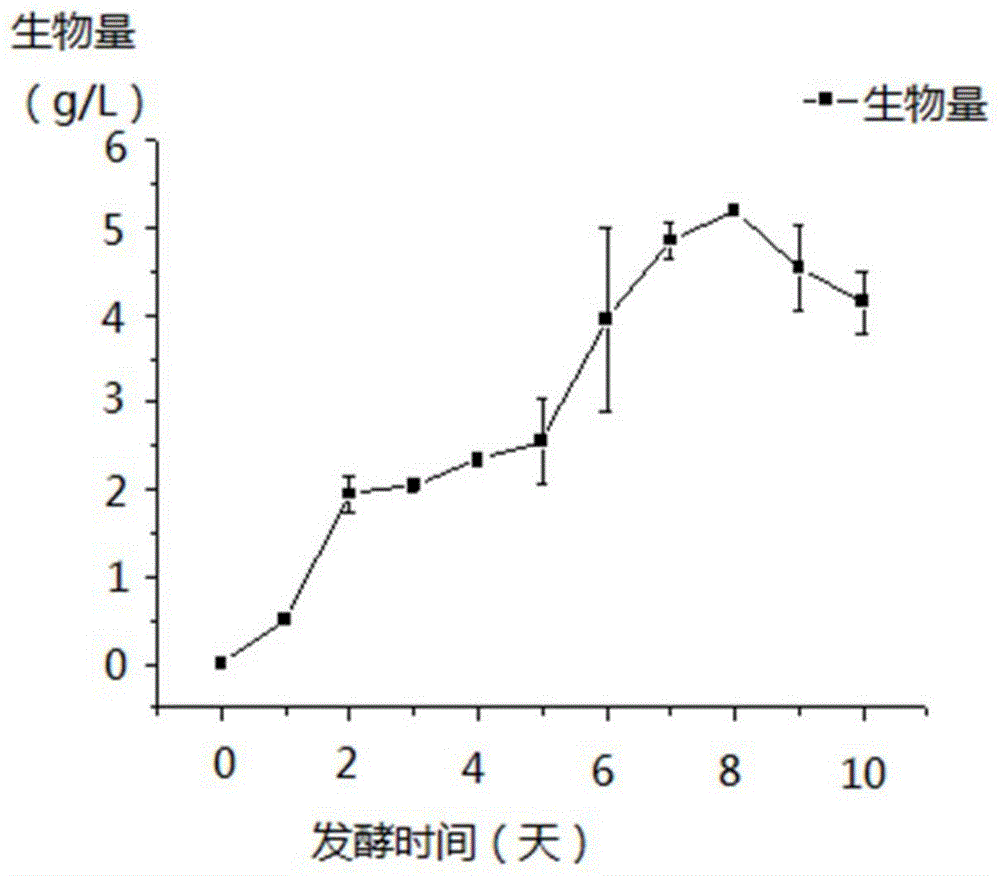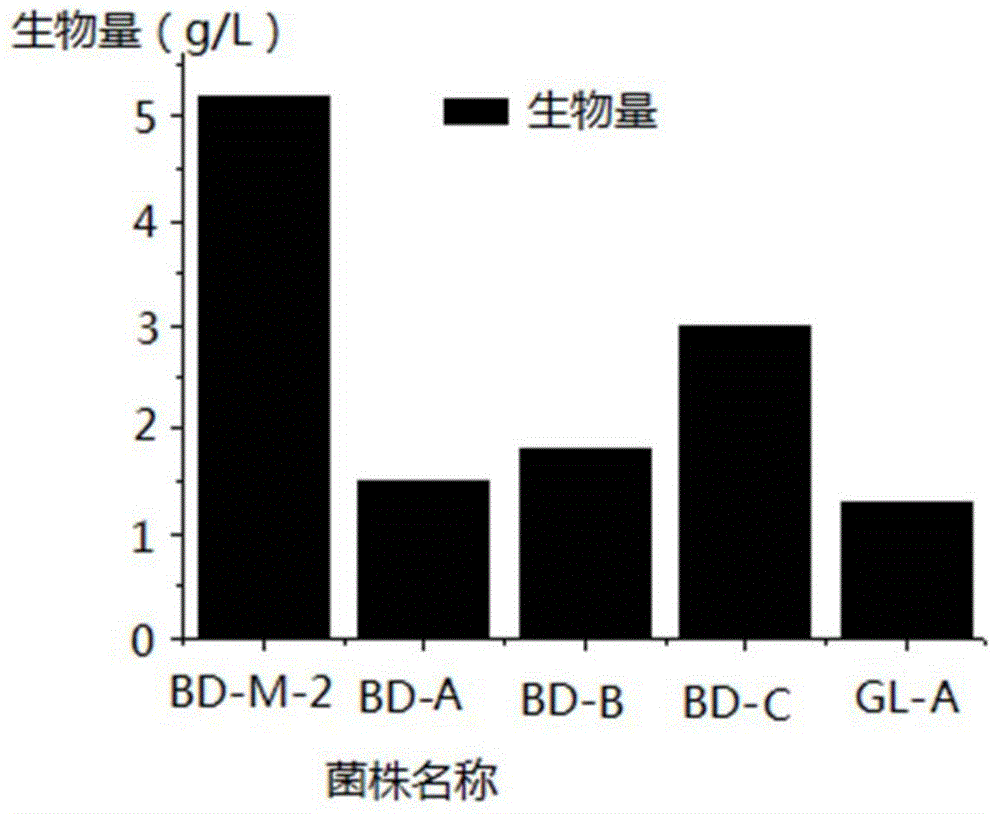Monascus purpureus strain and application thereof
A technology of Monascus koji and Monascus, applied to Monascus strains and their application fields, can solve problems such as limiting the application range of Monascus strains, and achieve high color value
- Summary
- Abstract
- Description
- Claims
- Application Information
AI Technical Summary
Problems solved by technology
Method used
Image
Examples
Embodiment 1
[0036] Example 1 Obtaining Purple Monascus BD-M-2 Strain
[0037] The separation and purification steps are as follows:
[0038] (1) Configure PDA solid medium: potato powder 6g / L, glucose 20g / L and agar 18g / L.
[0039] (2) Coating culture: Take a small amount of red yeast rice noodles from Wuhan, Hubei, my country, and evenly sprinkle it on the surface of the PDA solid medium prepared in step (1). Cultivate for 2 days in a constant temperature incubator at 30°C.
[0040] (3) After the white fluffy hyphae grow out, pick a few hyphae, streak and transfer them to another PDA solid medium to continue culturing for 1 week. Steps (2) and (3) were repeated three times to obtain a uniform character of purple red yeast rice, named BD-M-2.
[0041] (4) The purple red yeast rice BD-M-2 strain was stored on the PDA test tube slant medium and placed in a refrigerator at 4°C.
[0042] The purple red yeast rice CGMCC No. 8310 was deposited at the General Microbiology Center (CGMCC) of the China Micr...
Embodiment 2
[0044] Example 2 Culture characteristics of purple red yeast rice BD-M-2
[0045] (1) The purple red yeast rice BD-M-2 grows quickly on MEA solid medium, cultured in the dark at 25°C for 10 days, the colony diameter reaches 27-32mm. The aerial hyphae are lush, with white edges and orange in the middle; the back of the colony is dark orange and soluble in the culture medium. Microscopic observations showed that Monascus purpureus BD-M-2 produced a large number of conidia. The conidiophores were not clearly specialized, straight or slightly curved. The conidia were spherical, colorless, slightly rough walls, truncated at the base, and clustered. 5.5-10.4μm. The closed sac shell is light to brown, most immature, no ascospores are seen, all in line with the characteristics of Monascus (see Figure 4 ).
[0046] (2) After cultivation, it is found that the BD-M-2 strain can grow at 20~42℃, the suitable growth temperature is 25~32℃, the optimum temperature is 30℃; the suitable pH is 3....
Embodiment 3
[0048] Example 3 Physiological characteristics of purple red yeast rice BD-M-2
[0049] The composition of the PDA solid medium is: 10g / L potato powder, 30g / L glucose and 30g / L agar.
[0050] The composition of the PDB liquid medium is: 10g / L potato powder and 30g / L glucose, and the balance is water.
[0051] The purple red yeast rice BD-M-2 stored at 4°C was transferred to PDA solid medium under aseptic conditions, and activated and cultured at 30°C for 4 days. Then it was inoculated in PDA medium and activated at 30°C for 5 days to obtain first-grade seeds.
[0052] Fill a 250mL Erlenmeyer flask with 50mLPDB liquid medium, insert a 1cm diameter first-level seed fungus cake, 30°C shaker, 180r / min rotation speed, culture for 4 days, and then obtain the second-level fermentation seeds.
[0053] A 500mL Erlenmeyer flask was filled with 100mLPDB liquid culture medium, and the secondary fermentation seeds were inserted at a ratio of 5% (v / v), and cultured for 10 days on a shaker at 30°C an...
PUM
 Login to View More
Login to View More Abstract
Description
Claims
Application Information
 Login to View More
Login to View More - R&D
- Intellectual Property
- Life Sciences
- Materials
- Tech Scout
- Unparalleled Data Quality
- Higher Quality Content
- 60% Fewer Hallucinations
Browse by: Latest US Patents, China's latest patents, Technical Efficacy Thesaurus, Application Domain, Technology Topic, Popular Technical Reports.
© 2025 PatSnap. All rights reserved.Legal|Privacy policy|Modern Slavery Act Transparency Statement|Sitemap|About US| Contact US: help@patsnap.com



